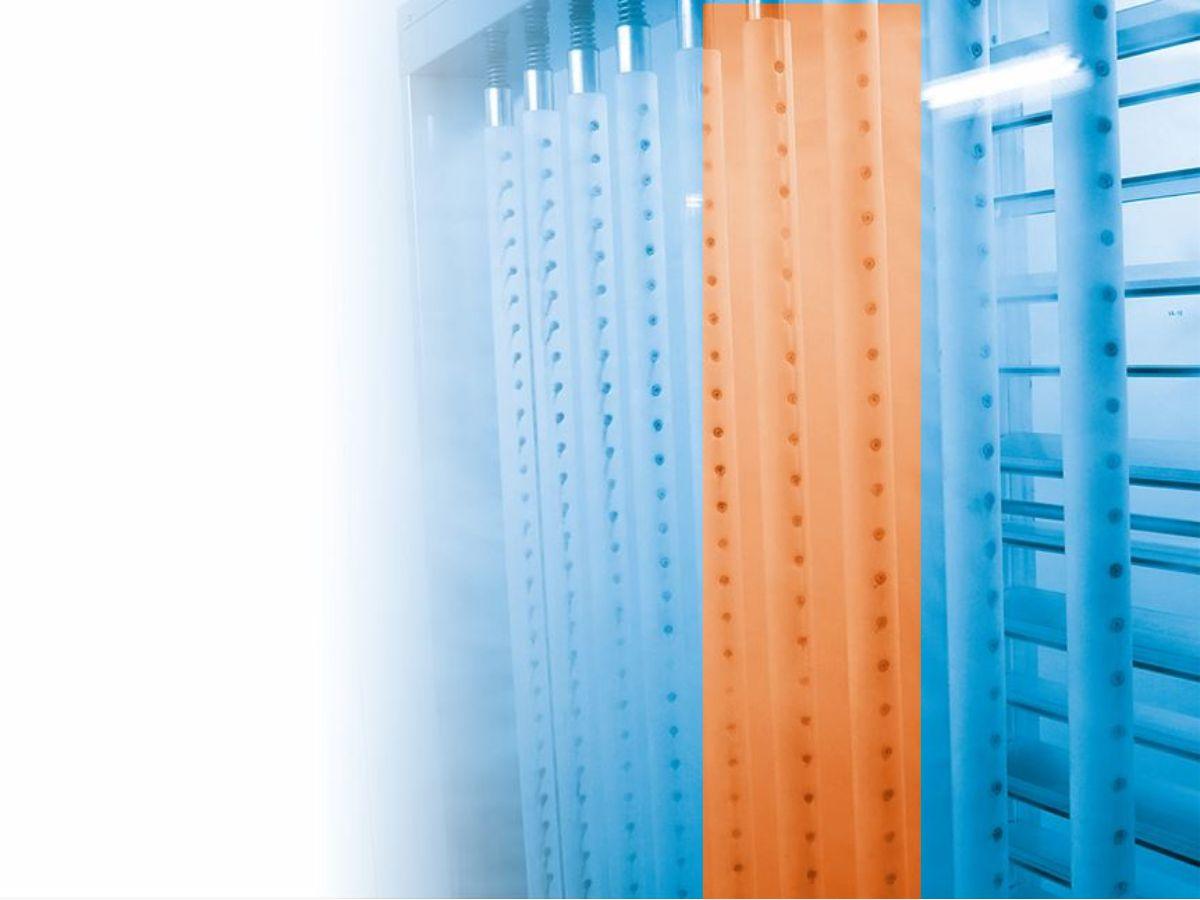
Stephen Finkel, DriSteem regional sales manager tells us the importance of optimising Relative Humidity Levels in Healthcare Facilities: Enhancing Health, Safety, and Productivity
In healthcare, where the focus is primarily on patient well-being, the health and productivity of healthcare employees are often overlooked. However, maintaining optimal working conditions for healthcare professionals is paramount for their health, job satisfaction, and the quality of care they provide.
One crucial yet often neglected factor in this equation is relative humidity (RH) levels within healthcare facilities. The impact of RH on employee health and productivity is profound, with improper RH levels posing significant risks and challenges. Understanding the importance of controlling RH levels in the complex environment of a healthcare facility begins with grasping the concept of humidity. Humidity refers to the amount of water vapour in the air, measured as RH, a function of both moisture content and temperature.
It represents the amount of water vapour in the air as a percentage of the maximum amount it could hold at a given temperature. The health implications of relative humidity levels in healthcare settings are significant. Low RH levels can lead to respiratory discomfort and worsen existing respiratory conditions, increasing absenteeism rates among healthcare staff and disrupting patient care. Conversely, high RH levels promote the growth and spread of pathogens, raising the risk of healthcare-associated infections (HAIs) among employees and patients.
Extremely high or low humidity levels can also damage sensitive medical equipment, causing malfunctions and interruptions in patient care. Maintaining appropriate humidity levels is also essential for infection control. Optimal RH levels can inhibit the growth and transmission of airborne pathogens, such as viruses, bacteria, and fungi. Adequate humidity also supports the body’s natural defence mechanisms, enhancing the effectiveness of respiratory tract mucous membranes in trapping and neutralising pathogens. Conversely, dry indoor air impairs these defences, increasing susceptibility to respiratory infections. Similarly, controlling relative humidity is vital for protecting medical equipment. Maintaining optimal humidity levels ensures the longevity and proper functioning of sensitive medical equipment, such as imaging machines, ventilators, and laboratory instruments. Excessive humidity can lead to corrosion, mold growth, and electrical malfunctions, jeopardising the accuracy and reliability of critical medical devices. Conversely, overly dry conditions can cause static electricity buildup, potentially damaging electronic components and posing a potential fire hazard.
While there is no one-size-fits-all approach to relative humidity levels in healthcare facilities, specific guidelines can help achieve optimal conditions. The American Society of Heating, Refrigerating, and Air-Conditioning Engineers (ASHRAE) recommends maintaining indoor RH levels between 30% and 60% for comfort and health.
In addition, the Chartered Institution of Building Services Engineers (CIBSE)publishes guidance on environmental design parameters for various building types, including healthcare facilities. Their publications offer recommendations for indoor air quality, which indirectly address RH considerations as part of overall comfort and health standards. Various humidification and dehumidification technologies are available to achieve and maintain these levels, each with advantages and applications. In general, isothermal humidifiers are used in healthcare facilities, as recommended by NHS England in the Health Technical Memorandum 03-01: Specialised ventilation for healthcare premises. Isothermal (steam) humidifiers work by boiling water inside the humidifier tank and distributing it into the ductwork through a steam manifold or directly into the space. Steam humidifiers can use electricity, natural gas, propane, or even pressurised boiler steam as an energy source. Each energy source has its own set of advantages and considerations. Electric steam humidifiers are often easier to install and maintain, while natural gas and propane options might be more cost-effective in certain regions.
This choice is often dictated by the specific requirements of the facility where the humidifier is installed. Commercial dehumidifiers come in various types, each designed to address specific humidity control needs in different settings. The most common kinds include refrigerant-based dehumidifiers and desiccant dehumidifiers. Refrigerant-based dehumidifiers are the most widely used commercial dehumidifiers. They operate similarly to residential dehumidifiers, using a refrigeration cycle to cool the air and condense moisture. The condensed water is then collected and drained away. Refrigerant-based dehumidifiers are efficient, relatively inexpensive, and effective in moderate humidity conditions. Desiccant dehumidifiers use a desiccant material (like silica gel) to absorb moisture from the air. An inexpensive hygrometer can be used to determine the RH levels in a facility. Take readings at various locations in the building and at different times of the day to comprehensively understand the humidity levels. Soliciting feedback from healthcare staff regarding their comfort levels and addressing any concerns related to humidity can foster a culture of employee-centric care and contribute to overall job satisfaction and productivity. Humidification technology can be installed as a retrofit for existing buildings or designed into new construction projects. The type of indoor space, air quality goals, energy source, required level of maintenance, capacity, etc., will determine the best technology for each building. Of course, energy management and the analysis of energy usage drive the selection of humidification efficiencies and sustainability.
If a building does not have a humidification system, it is time to add one to protect processes, equipment, health, and safety. If a humidification system exists, it should be reviewed to ensure it is appropriately sized, operating correctly, and energy efficient since
building usage often changes over time. Investing in commercial humidity control systems, such as those offered by industry leaders like DriSteem, can effectively regulate RH levels within healthcare facilities. These systems provide flexibility and precision in catering to specific humidity needs across different areas within the facility. Whether integrating humidity control solutions in existing structures or implementing them in new buildings, factors like the type of indoor space, energy source, required maintenance, and capacity determine the best technology for each building. DriSteem provides innovative humidification solutions tailored to meet the unique
requirements of different healthcare environments.
Visit www.dristeem.com to learn more about humidity control and find local resources to assess your facility.
